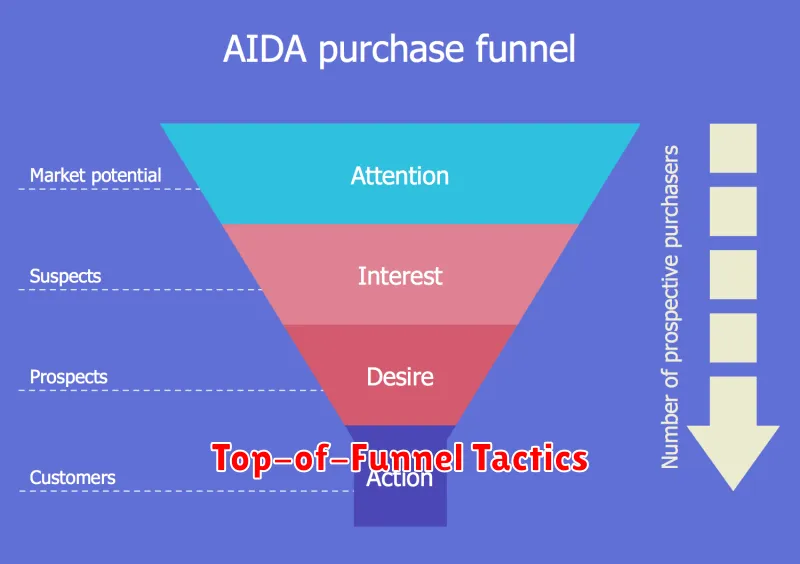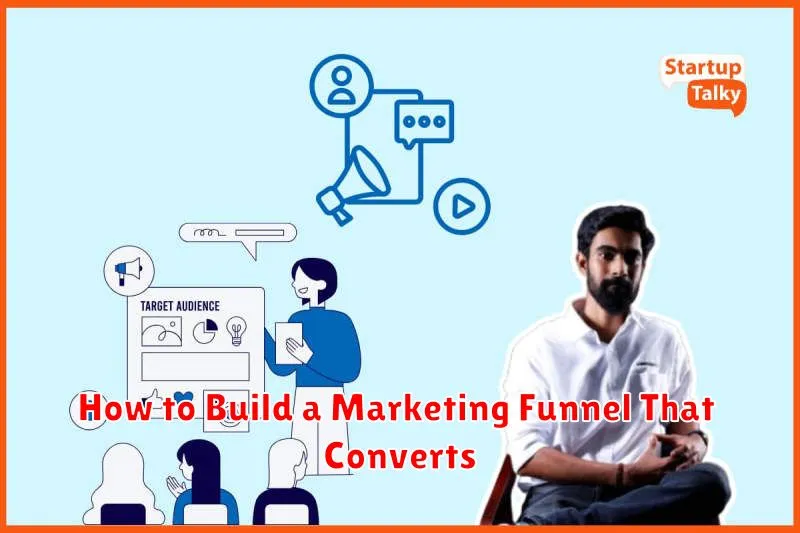In today’s competitive digital landscape, a high-converting marketing funnel is essential for business growth. This article will provide a comprehensive guide on how to build a marketing funnel that effectively attracts, engages, and converts prospects into loyal customers. Learn the key stages of a successful marketing funnel, from awareness to conversion, and discover practical strategies to optimize each step for maximum impact. Whether you are a seasoned marketer or just starting out, understanding the principles of a high-converting marketing funnel is crucial for achieving your business objectives.
Building a marketing funnel that converts requires a strategic approach that aligns with your target audience and business goals. This article will delve into the essential elements of crafting a high-performing marketing funnel, covering topics such as defining your ideal customer, crafting compelling marketing messages, and selecting the right marketing channels. We will explore proven tactics for attracting leads, nurturing them through the sales funnel, and ultimately driving conversions. By implementing the strategies outlined in this guide, you can effectively transform your marketing efforts into a powerful engine for business growth.
What Is a Marketing Funnel?
A marketing funnel is a visual representation of the customer journey, from initial awareness to final purchase. It depicts the process of leading prospects through different stages of engagement, ultimately converting them into paying customers. Think of it as a funnel, where a large number of potential customers enter at the top, and a smaller, more qualified group emerges as buyers at the bottom.
The funnel is typically divided into several key stages. These stages often include awareness (where potential customers become aware of your brand or product), interest (where they express interest and learn more), desire (where they develop a preference for your offering), and action (where they make a purchase). Different models may use slightly different stages or terminology, but the underlying principle remains the same.
Understanding the marketing funnel is crucial for businesses because it allows them to tailor their marketing efforts at each stage. By addressing the specific needs and motivations of prospects at each point in the funnel, businesses can optimize their conversion rates and achieve a higher return on their marketing investment.
Stages of the Funnel Explained
The marketing funnel represents the customer journey from initial awareness to final purchase. Understanding each stage allows businesses to tailor their marketing efforts for maximum impact.
Awareness: This is the top of the funnel where potential customers first encounter your brand or product. They may discover you through social media, online ads, or word-of-mouth. The goal at this stage is to generate interest and establish your brand presence.
Interest: Once aware, potential customers may start researching your offerings and comparing them with competitors. Providing valuable content, such as blog posts or videos, can nurture their interest and position your business as a credible source.
Decision: At this stage, prospects are actively considering a purchase. They may be evaluating different product features, pricing, or customer reviews. Targeted promotions, free trials, or consultations can help them make a final decision.
Action: This is the bottom of the funnel where the customer completes a purchase or takes a desired action, such as signing up for a newsletter or requesting a quote. A streamlined checkout process and clear call-to-actions are essential for converting prospects into paying customers.
Top-of-Funnel Tactics

The top of the funnel (TOFU) is where you cast a wide net to attract a large audience. Your goal at this stage isn’t to sell, but to generate awareness of your brand and capture the interest of potential customers. This is achieved by providing valuable content that addresses their pain points and questions.
Content Marketing plays a crucial role in TOFU. Examples include blog posts, infographics, and videos that offer helpful information related to your industry. Social Media Marketing is also effective for reaching a broad audience. Engaging content and targeted advertising can drive traffic to your website or landing pages.
Consider using Search Engine Optimization (SEO) to attract organic traffic. By optimizing your website and content with relevant keywords, you can improve your search engine rankings and increase visibility to potential customers searching for information related to your offerings. Paid advertising, such as pay-per-click (PPC) campaigns, can also be a valuable tool for reaching a wider audience quickly.
Middle-of-Funnel Engagement
The middle of the funnel (MOFU) focuses on nurturing leads who have shown interest and are now evaluating their options. Engagement is key here. These individuals are actively researching, comparing, and seeking validation. Your content should provide the information they need to make an informed decision, positioning your product or service as the ideal solution.
Effective MOFU content includes case studies, webinars, product demos, and free trials. These tools offer valuable insights into the practical applications and benefits of your offering. By providing in-depth information and addressing potential concerns, you build trust and credibility with your audience.
Targeted communication is crucial at this stage. Leverage email marketing, retargeting ads, and personalized content to deliver relevant messages that resonate with individual needs. Track user behavior and tailor your approach based on their demonstrated interests. For example, if a lead downloads a specific case study, follow up with related resources or a personalized email offering a consultation.
Bottom-of-Funnel Conversions
The bottom of the funnel (BOFU) is where the sales magic happens. Leads who’ve journeyed through your funnel are now highly qualified and ready to convert into paying customers. Your BOFU strategy should focus on making the final purchase decision as easy and compelling as possible.
Key elements of a successful BOFU include clear calls to action, streamlined checkout processes, and addressing any remaining objections. Offering compelling incentives, such as limited-time discounts or exclusive bonuses, can further nudge prospects towards conversion. Providing exceptional customer service and support builds trust and reassures them they’re making the right choice.
Tracking key metrics like conversion rates, average order value, and customer lifetime value is crucial at this stage. This data allows you to measure the effectiveness of your BOFU strategies and identify areas for improvement. Continuously analyzing and optimizing your BOFU ensures you’re maximizing your return on investment and achieving your business goals.
Creating Funnel-Specific Content
Each stage of your marketing funnel requires distinct content tailored to the specific needs and motivations of your audience at that point. Awareness stage content should focus on introducing your brand and addressing broad industry problems. This might include blog posts, social media updates, or infographics covering relevant topics.
As prospects move into the consideration stage, your content should delve deeper into potential solutions. Offer comparisons, case studies, and webinars that highlight your product’s benefits without being overly promotional. Focus on building trust and demonstrating expertise.
In the decision stage, content should directly address purchasing concerns and persuade prospects to choose your product. Product demos, free trials, testimonials, and comparison charts can be highly effective here. Make the purchasing process as easy as possible with clear calls to action.
Finally, action stage content aims to solidify the customer relationship and encourage repeat purchases. Onboarding materials, exclusive content, loyalty programs, and personalized recommendations all contribute to post-purchase engagement and long-term customer value.
Lead Magnets and Offers
A crucial element of a successful marketing funnel is the lead magnet. This is the valuable piece of content offered for free in exchange for a visitor’s contact information, effectively converting them into a lead. Lead magnets should address a specific pain point of your target audience and provide tangible value.
Examples of effective lead magnets include ebooks, checklists, templates, webinars, and free trials. The key is to offer something irresistible that aligns with your product or service and encourages the lead to move further down the funnel.
Beyond the initial lead magnet, consider offering additional offers throughout the funnel. These could include case studies, product demos, or exclusive discounts. Each offer should be strategically placed to nurture the lead and guide them toward a purchase.
By providing a series of valuable lead magnets and offers, you build trust and demonstrate expertise, ultimately increasing the likelihood of conversion.
Retargeting Funnel Drop-Offs
Retargeting plays a crucial role in re-engaging potential customers who have interacted with your brand but haven’t completed the desired action, such as making a purchase. By strategically targeting these drop-offs, you can significantly improve your conversion rates.
Identify key drop-off points within your funnel. Common areas include abandoned carts, product page views without purchase, and incomplete form submissions. Analyzing these points reveals where users are losing interest and provides insights into potential obstacles.
Tailor your retargeting campaigns to address the specific needs and interests of users based on where they dropped off. For instance, someone who abandoned their cart might respond well to a reminder email offering free shipping or a small discount. Those who viewed a specific product page can be retargeted with ads showcasing similar items or customer reviews.
Segmentation is vital for effective retargeting. Group users based on their behavior and tailor messaging accordingly. This personalized approach ensures that your campaigns are relevant and resonate with the target audience.
Continuously monitor and optimize your retargeting campaigns. Analyze the performance of different ad creatives, messaging, and targeting parameters to identify what works best and refine your strategy for optimal results.
Measuring Funnel Performance
Measuring the effectiveness of your marketing funnel is crucial for optimizing conversions. Key Performance Indicators (KPIs) provide quantifiable metrics to track progress and identify areas for improvement. Analyzing these metrics helps you understand where potential customers are dropping off and what adjustments are needed to improve the overall performance of your funnel.
Some essential KPIs to monitor include:
- Conversion Rate: The percentage of visitors who complete a desired action at each stage of the funnel. This could be clicking a button, signing up for a newsletter, or making a purchase.
- Entry Sources: Identifying where your traffic originates (e.g., social media, organic search, paid advertising) allows you to determine which channels are most effective in driving leads.
- Time Spent in Each Stage: Understanding how long prospects spend at each stage reveals potential bottlenecks or areas where they might be losing interest.
- Cost Per Acquisition (CPA): Calculate the cost associated with acquiring a new customer through the funnel. This helps assess the return on investment of your marketing efforts.
Regularly monitoring these KPIs enables you to make data-driven decisions, refine your strategies, and ultimately, maximize the conversion rate of your marketing funnel.
Examples of Effective Funnels
Examining effective funnels across different industries can provide valuable insights for building your own. Here are a few examples:
E-commerce: A common e-commerce funnel might start with a social media ad showcasing a product. This leads to a product page on the website (awareness). Next, a discount code popup encourages adding the item to the cart (interest). Abandoned cart emails re-engage potential customers (desire). Finally, a streamlined checkout process facilitates the purchase (action).
Lead Generation for B2B SaaS: These funnels often begin with valuable content like a blog post or webinar (awareness). A gated resource, such as a whitepaper or template, requires contact information (interest). Follow-up emails nurture the lead with further information and case studies (desire). A product demo or free trial is offered, leading to a sales call and potential conversion (action).
Non-profit Organizations: These funnels might begin with a social media campaign highlighting a cause (awareness). Clicking through leads to a landing page with a compelling story and impact statistics (interest). A clear call to action encourages donations or volunteering (desire and action). Personalized thank-you messages and updates strengthen donor relationships and encourage recurring contributions.

